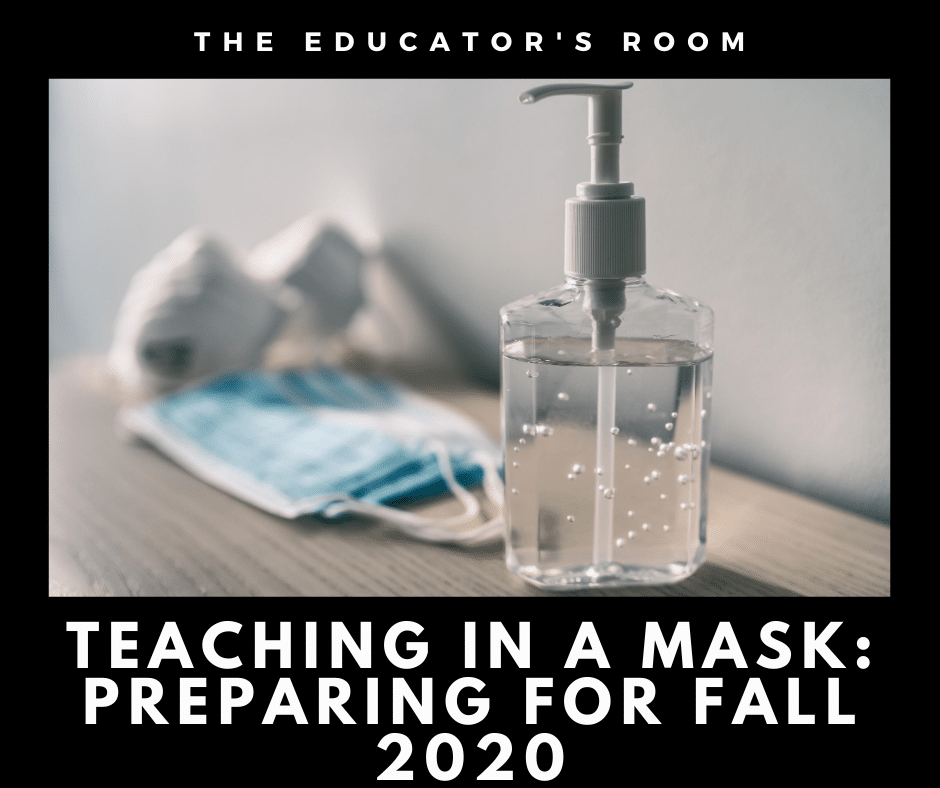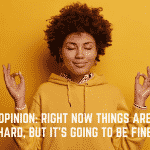I’ve been thinking about wearing a mask lately. With that, I’ve been thinking about back to school. It’s that time of year for teachers when we’re all thinking even more about the upcoming school year. Rereading our curriculum, getting our classrooms ready…it’s very exciting. But this year, things are different. School districts have begun to release their plans for the fall, and some things are looking…less than ideal. Hybrid schooling is great in theory, and on paper I love it, but in practice, it means a ton of extra work. And then, of course, we have the masks.
In my district’s plan, teachers and staff are required to wear a mask, and students are highly encouraged to do so as well. But this raises a whole host of questions. To be clear, I will not be talking about the mask battle here. Whether we like it or not, some districts are requiring their teachers to wear masks. But there are things that we, as educators, need to be aware of and thinking about.
Volume and Masks
One of the biggest concerns that I have seen regarding teaching in masks has to do with hearing. Masks can muffle your voice. They also prevent lipreading, which many people, including students, use to keep track of conversations. How can we address this issue? Many companies have begun marketing products specifically to deal with this. Special microphones for teachers, as well as masks with clear plastic over the mouth, have been advertised quite a bit.
While these tools are very useful, they can get expensive (the microphones, at least). For teachers who are unable to get plastic masks, or who worry that the plastic doesn’t offer the same protection, there are some options. Teachers are going to have to use their loud voices more often. I have been practicing my projection, and rather than using my classroom voice, I’ve been using my tall ship voice, which is twice as loud as my regular teacher voice. This will help my students hear what I am saying. I will also be posting recorded lectures (without masks) of myself online for my students. This will allow them to go back and hear anything that they might have missed due to my mask.
Building Relationships
For some educators, there are concerns that they will have a more difficult time forming relationships with students during the first weeks of school. Of course, this is a crucial piece of the education puzzle and is because masks, by design, cover half of the face. For teachers who use exaggerated facial expressions, or who are just extremely expressive, this can be a hindrance. This is another place where clear plastic masks could be useful.
Personally, I went online to stores like Etsy, RedBubble, and TeePublic. All of them offer masks, and each mask is unique. I got a variety of mask designs that I can use to show students who I am as an educator. I am hoping that this will help me build up that relationship piece, just like my funny socks do. I plan on using my masks to showcase my personality and maybe start a conversation. In addition, we can become more expressive with our eyes. This is easier said than done, but from what I’ve seen, we’re all getting better at that!
Sweat and Breathing
Another issue with masks is the one that comes to my mind first, masks are just uncomfortable. They’re sweaty, and they fog up my glasses. Thinking about wearing a mask for nine hours straight is stressful. Yes, other professions have been doing this for a while, but that does not make it easier. But there is really only one thing to do. We need to practice. Every day, teachers should wear their masks for a little bit longer. That way, when we start teaching in our masks, it won’t be such a foreign thing. There are tricks to use to keep masks from slipping off our noses, like tucking them under our glasses or using a paperclip to catch the excess fabric.
Also, after wearing a mask for extended periods of time, it can be hard to breathe. Teachers have shared their stories of mask-teaching, and it sounds exhausting. It sounds like it will get hot and sweaty, and might become difficult to get enough air. But, it also sounds like that gets better after time. The process might not be pleasant, but it WILL get better. So, as much as I hate to say it, we have to practice.
Final Thoughts
While some districts are requiring masks, others are only recommending them. As we have seen with the current pandemic, however, things can change quickly. As recently as July 28th, schools in the UK were not allowing their teachers to wear face masks in the classroom. However, the teachers union is demanding that they are given that choice. For all the negative aspects of mask-wearing, it is still something that very likely slows down the spread of COVID-19. For many, it is a tangible thing we can do to help our neighbors.
If teachers have to wear a mask in the classroom, there are things we can do to prepare ourselves. We can find masks that convey our personality, use our eyes more, and practice wearing masks. Work out the bugs in our masks before the first week of school, and pre-record our lectures to help the students who might need extra help hearing. Find masks with clear plastic around the mouth. There is no perfect answer to the issue of wearing masks in school, but these are some things I will be doing to get myself mentally prepared for September.






